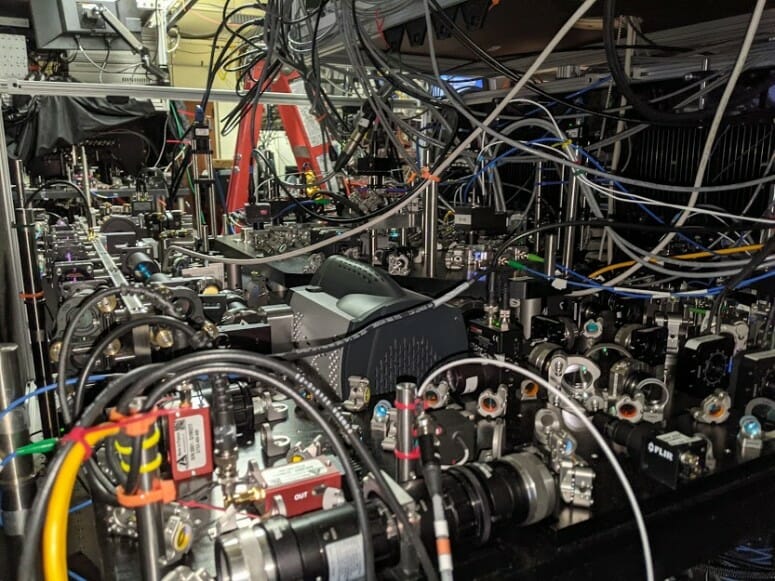20 Apr UW–Madison, industry partners run quantum algorithm on neutral atom quantum computer for the first time

The central components of the quantum computer in the Saffman lab. Practical quantum computers could solve complex problems that regular computers cannot. COURTESY OF THE SAFFMAN LAB
What happened
- A university-industry collaboration has successfully run a quantum algorithm on a type of quantum computer known as a cold atom quantum computer for the first time. The achievement by the team of scientists from the University of Wisconsin–Madison, ColdQuanta and Riverlane brings quantum computing one step closer to being used in real-world applications.
Why it matters
- Practical quantum computers could solve complex problems, known as algorithms, that classical computers cannot. This could be beneficial for many applications, such as logistics, drug discovery and computational modeling of quantum processes.
- Running a quantum algorithm on the cold atom style of computer is a proof of concept that this approach could work.
- “There’s a race to build a useful quantum computer, and there’s a handful of different approaches that are being developed to that end,” says Mark Saffman, a physics professor at UW–Madison, director of the Wisconsin Quantum Institute, and chief scientist for quantum information at ColdQuanta. “Cold atom qubits is one of the five approaches that are actively being developed, and this paper presents for the first time the capability of running quantum circuits and quantum algorithms using cold atom qubits.”



